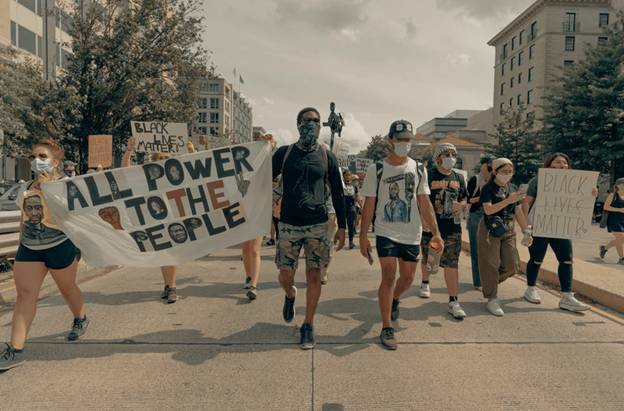Over the past several years, the world has been shaken by numerous cultural and social events. And whether it was a BLM movement or the rapid pandemic outbreak, it has influenced people, with social media platforms being the best venues for taking a stance and addressing critical messages to the public.
Although stressful, the number of protests and other social uprisings should not be surprising. With the Internet being more accessible, more people have gained tools for voicing their opinions and gathering around pressing issues. Such actions have also resulted in people’s raised consciousness as well as awareness of what’s going on worldwide these days.
Not only do these issues nudge governments to act and reach a compromise, but people have also started paying close attention to the business world and whether brands are up to date with significant matters.
Many companies are under people’s scrutiny, so whatever actions brands take – from small moves such as being empathetic with others or brands can create a logo with a special thematic logo design to express solidarity and tolerance to more articulate actions – they will be visible to a large audience sooner or later.
Suppose you are a brand owner and strive to take on social issues; what do you do? The following tips will answer the question.

Appeal to the right audience
It’s impossible to please every follower, be it a product, service, or standpoint. Regardless of the opinion voiced, there will always be advocates and opponents. And while you can’t do anything about that, it’s more important to remain critical and have meaningful, transparent, and thought-provoking communication with the followers.
Appealing to the target audience doesn’t mean you take a social issue circulating in discourse and follow the same patterns people go. Instead, you contribute to the issue by approaching it objectively. Oftentimes, it excellently works in coordination with influencers, speaking of which.
Gain trust through cooperating with various celebs
Celebrities often come as supporters of social and cultural movements. Their stances help people come to grips with issues and feel genuine support.
Cooperating with micro and macro-influencers is another way to face a social issue or emphasize its significance.
Before collaborating with such celebs, check if their viewpoints don’t contradict the messages you plan on spreading. Otherwise, the entire campaign might go down the drain because of bias and some ulterior motive (e.g., gaining popularity, boosting sales, improving recognition, etc.).
Voice personal experience and knowledge on the matter
Companies are often thought to be leaders of thoughts, so people tend to gravitate toward what they declare and the side they take. Lots of money-oriented brands frequently jump on the bandwagon to make sure their business goes with the flow. While this might work initially, such moves usually do no good to the companies in the long run.
If you are aware of the issue and know how to resolve it, make sure your messages are transparent and coherent. Moreover, include personal experience dealing with the matter to back up your suggestions on combating it. Doing that will make you look competent on the matter.
Secure the arena and let others speak
Another excellent idea for brands to adopt is letting others speak. There is no better way to cope with any situation than to discuss the issue in the form of a meaningful talk. In this instance, brands can offer a lot, with the arena for such discussions being among the most critical things.
Since companies often have large customer bases, and their social media profiles thrive, allowing people to voice their opinions and rolling them out on brands’ social networks will have an enormous outreach.

Whatever the issue, brands will still have to be mediators, moderating content and securing its inclusivity and diversity. However, the process can be way more straightforward when the rules for submitting such content are established beforehand.
Take a stand only when being aware of the issue and after doing a risk assessment
Speaking out always brings about some consequences. Luckily, the top three reactions are usually positive. Despite that, adverse reactions still have a chance of occurring, which is why evaluating how users might perceive the brand’s stance is essential.
To diminish the likelihood of negative responses, companies must research the subject and fully get familiar with it before speaking publicly.
Some corporations decide not to get into the discourse and take neutrality. While this might sometimes be an option, let’s not forget that certain issues can’t be ignored. That is to say, BLM and MeToo movements have tremendously permeated business, so taking no actions was tantamount to signing brands’ own death warrant.
Recapitulation
People have been invested in various social, environmental, and cultural concerns more than ever, and it has changed the way they started viewing brands. Companies can’t stay away from problems society undergoes at a given moment. Nor can they face issues without analyzing them first and providing practical solutions.
What can brands do? Above are a few tips on how companies can deal with numerous issues on social media platforms. Following them will allow you to face problems and tackle them effectively.








